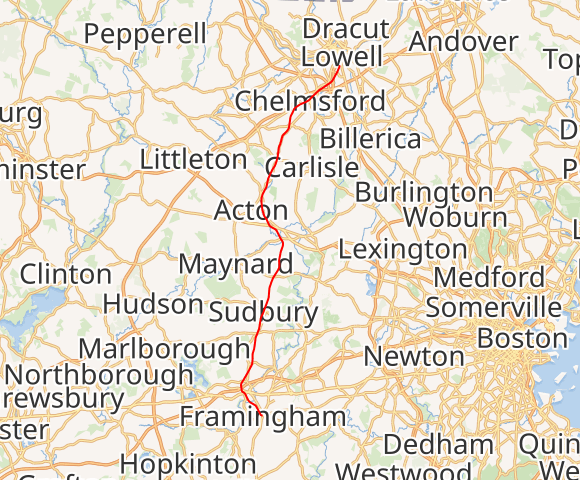Share This Article
The Framingham and Lowell Railroad that ran from Lowell to Framingham is long gone, and memories of seeing trains on it are fading fast. The baritone steam whistles blow no more. The Framingham and Lowell line is receding into history. No trains have been seen on it for more than 25 years. We can read about the railroads in history books, and if you pay attention, you can see some railroad artifacts along the sides of the Bruce Freeman Rail Trail. Although now silent, they witnessed the transformation of Sudbury from a rural outpost to a growing agricultural town on the verge of the industrial revolution. It wasn’t that long ago.

Although the railroad is no more, the corridor has a new life: as the Bruce Freeman Rail Trail. Its main uses now are recreation and transportation.
SALVAGING HISTORY
As the rails and ties were being dissembled, I used photography to document some of the methods and specialized equipment used to clear the corridor.



The disassembly work resulted in railroad components, such as pieces of rail, connector bars, railroad spikes, and plates remaining on the ground. Most of the remaining pieces of iron were collected and hauled away for reuse or recycling. With permission, I was able to save a few pieces of the railroad.

They sat in my garage for about a year. Then someone asked, “What are you going to do with all that junk?” How could the pieces be put to good use?
INSPIRATION
The Lionel model trains in my basement gave me an idea.

Maybe the salvaged pieces of railroad could be used in a sculpture for the BFRT. Thinking about what the sculpture should be, four criteria came to mind. First, it should pay homage to the historical character of the land as a railroad. Second, it should contain at least a few of the actual pieces of iron from the railroad. Third, it should reflect the current use of the corridor as a recreational trail. Fourth, it should respect the wildlife that inhabited the land even before it was a railroad.
CONCRETE PADS FOR ARTWORKS
Plans were included in the original MassDOT design for proposed BFRT art amenities. There are four circular concrete pads along the trail, each five feet in diameter.
This one is just north of the spur connecting the rail trail to Parkinson Field.


FINDING AN ARTIST/WELDER WHO WORKS IN STEEL
The next step was to find an artist who worked in welding and steel. After a few dead ends I was put in touch with Walter Clark, a welder/artist at Stonybrook Fine Arts in Jamaica Plain. We met and I described the vision and requirements for a sculpture.
Walter came up with some sketches and ideas. Over time I learned that translating a vision into something tangible required patience and flexibility for both Walter and myself. Each trip to the studio in Jamica Plain brought concept and reality closer together.
One day, Walter asked me to take a look at something he had created. Thanks to Walter’s artistry and creativity I could hold my vision in my hand. This is the model he made.

Walter cautioned me this was the concept in miniature. Fabricating the actual sculpture would not be as easy as making this model. The final result might be different due to availability of parts and the need for structural integrity. But it would meet the four criteria I had set out.
PROGRESS PHOTOS
These are progress photos of the sculpture at Stonybrook as it was taking shape and coming to life.


FIGURES FOR THE SCULPTURE
The next step was to decide upon the specific figures that would represent the current uses of the BFRT. The figures would be fabricated from a plate of steel using a plasma cutting tool. Getting the proper scale for adults, children, and wildlife was a challenge.
APRIL 4, 2025, Walter Clark with prototypes of figures.

SIZE
The final sculpture will be about 5 ½ feet long, 5 feet high, and 3 feet deep. It will weigh over 500 pounds and will be painted black.
LOCATION
Placement of the sculpture along the Bruce Freeman Rail Trail has not yet been decided.
COST
The cost of the sculpture itself has been underwritten by a generous grant from the Friends of the Bruce Freemen Rail Trail. The cost of transporting the sculpture to Sudbury and installing it will be covered by funding previously approved at the 2022 Sudbury Annual Town Meeting.
WHEN
I anticipate the sculpture will be placed this summer after the formal ribbon cutting ceremony, and when the right of way is in the custody of the Town of Sudbury.
